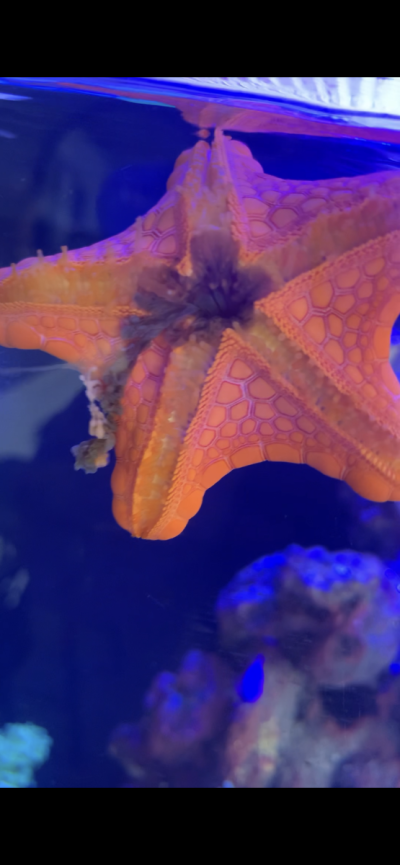I recently got an Australian biscuit starfish, per my wife’s request. I know they’re hard to keep but she insisted. It’s been moving all over the tank, eating algae on the glass and rocks. Today it looks like this, with brown stringyness hanging from its mouth. Is this his gonads and some type of asexual reproduction? Is he dying? Just need some opinions here.
acclimation was very slow, about 2 weeks ago, and made sure to never expose the starfish to air. Parameters all look good, nothing is standing out to me. Please help!

acclimation was very slow, about 2 weeks ago, and made sure to never expose the starfish to air. Parameters all look good, nothing is standing out to me. Please help!



















